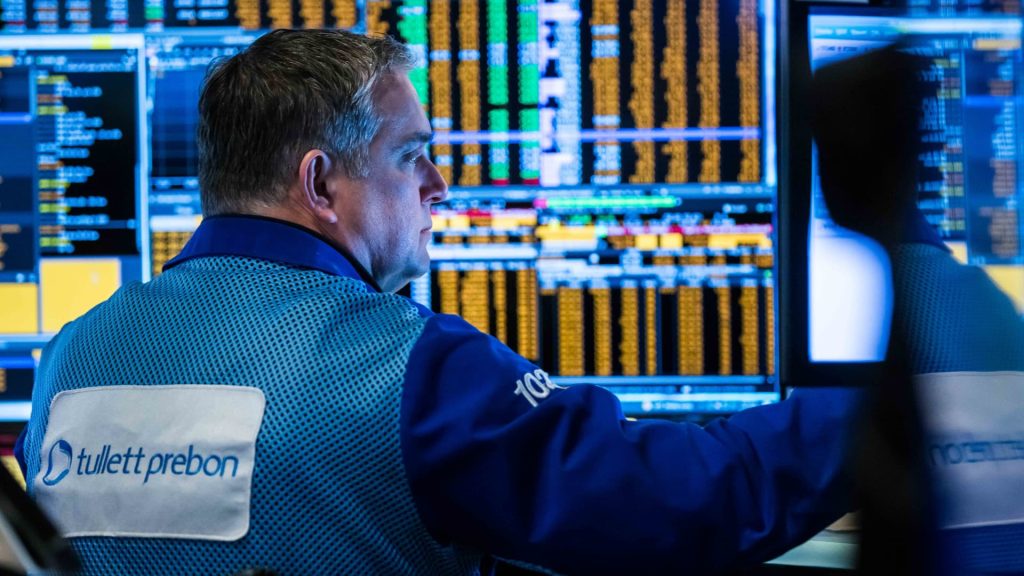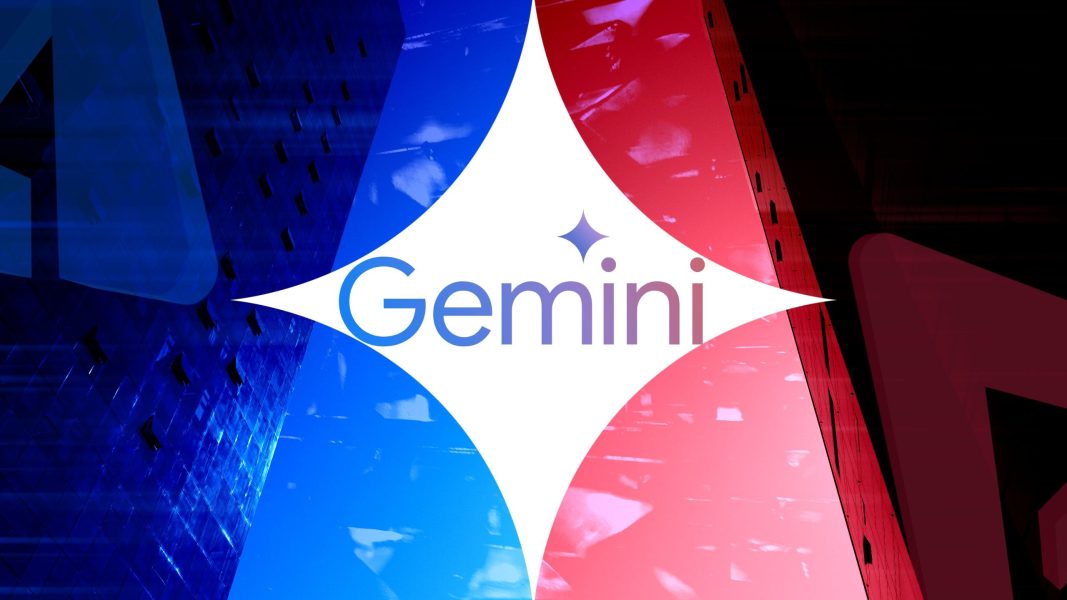Dow futures tumble 300 points, Nasdaq futures lose 3% as Nvidia leads AI stock rout: Live updates – CNBC

Credit CardsLoansBankingMortgagesInsuranceCredit MonitoringPersonal FinanceSmall BusinessTaxesHelp for Low Credit ScoresInvestingSELECTAll Credit CardsFind the Credit Card for YouBest Credit CardsBest Rewards Credit CardsBest Travel Credit CardsBest 0% APR Credit CardsBest Balance Transfer Credit CardsBest Cash Back Credit CardsBest Credit Card Welcome BonusesBest Credit Cards to Build CreditSELECTAll LoansFind the Best Personal Loan for YouBest Personal LoansBest Debt Consolidation LoansBest Loans to Refinance Credit Card DebtBest Loans with Fast FundingBest Small Personal LoansBest Large Personal LoansBest Personal Loans to Apply OnlineBest Student Loan RefinanceSELECTAll BankingFind the Savings Account for YouBest High Yield Savings AccountsBest Big Bank Savings AccountsBest Big Bank Checking AccountsBest No Fee Checking AccountsNo Overdraft Fee Checking AccountsBest Checking Account BonusesBest Money Market AccountsBest CDsBest Credit UnionsSELECTAll MortgagesBest MortgagesBest Mortgages for Small Down PaymentBest Mortgages for No Down PaymentBest Mortgages with No Origination FeeBest Mortgages for Average Credit ScoreAdjustable Rate MortgagesAffording a MortgageSELECTAll InsuranceBest Life InsuranceBest Homeowners InsuranceBest Renters InsuranceBest Car InsuranceTravel InsuranceSELECTAll Credit MonitoringBest Credit Monitoring ServicesBest Identity Theft ProtectionHow to Boost Your Credit ScoreCredit Repair ServicesSELECTAll Personal FinanceBest Budgeting AppsBest Expense Tracker AppsBest Money Transfer AppsBest Resale Apps and SitesBuy Now Pay Later (BNPL) AppsBest Debt ReliefSELECTAll Small BusinessBest Small Business Savings AccountsBest Small Business Checking AccountsBest Credit Cards for Small BusinessBest Small Business LoansBest Tax Software for Small BusinessSELECTAll TaxesFiling For FreeBest Tax SoftwareBest Tax Software for Small BusinessesTax RefundsTax BracketsTax TipsTax By StateTax Payment PlansSELECTAll Help for Low Credit ScoresBest Credit Cards for Bad CreditBest Personal Loans for Bad CreditBest Debt Consolidation Loans for Bad CreditPersonal Loans if You Don’t Have CreditBest Credit Cards for Building CreditPersonal Loans for 580 Credit Score or LowerPersonal Loans for 670 Credit Score or LowerBest Mortgages for Bad CreditBest Hardship LoansHow to Boost Your Credit ScoreSELECTAll InvestingBest IRA AccountsBest Roth IRA AccountsBest Investing AppsBest Free Stock Trading PlatformsBest Robo-AdvisorsIndex FundsMutual FundsETFsBondsThe S&P 500 and Nasdaq Composite were down sharply Monday on concern about an artificial intelligence stock bubble popping because of the emergence of Chinese startup DeepSeek, which has possibly made a competitive AI model for a fraction of the billions Silicon Valley is spending.The Nasdaq Composite lost 3.07%, falling to 19,341.83, and the S&P 500 slid 1.46% to 6,012.28. The Dow Jones Industrial Average added 289.33 points, or 0.65%, to close at 44,713.58. Gains in Apple, Johnson & Johnson and Travelers helped lift the 30-stock index.Last week, DeepSeek released R1, an open-source reasoning model that reportedly outperformed OpenAI’s in several tests, and has climbed the charts at app stores. DeepSeek said the initial version of its large language model, launched in late December, cost less than $6 million to design. While Wall Street questions that figure, the startup’s claims are nonetheless raising concerns that big AI models could be built out with much less investment.AI darling Nvidia dropped nearly 17%, Broadcom lost 17.4%, and AMD shed 6.4%. Microsoft lost 2.1%. Palantir was hit for 4.4%.Derivative plays from the AI buildout such as power providers also suffered. Constellation Energy lost nearly 21%, while Vistra dropped 28%.”It’s a good example of selling first and asking questions later, and investors sort of feeling that valuations are a bit stretched for technology in general and for semiconductors in particular,” said Sam Stovall, chief investment strategist at CFRA Research. “We’re going to have volatility, especially when we’re dealing with a richly valued market and exogenous events.”On the other hand, a rotation into more defensive areas of the market helped ease Monday’s losses.”What I’ve also been encouraged by is investors are not bailing out of stocks necessarily, but are rotating into the defensive areas, like consumer staples, health care, real estate,” Stovall added. “The market at least seems to be coming back.”Monday’s sharp declines come as traders brace for a major week, with “Magnificent Seven” members Meta Platforms, Microsoft, Tesla and Apple all due to report their latest quarterly results.On top of that, the Federal Reserve will hold its first policy meeting of the year, deciding on the level of interest rates Wednesday. Fed funds futures are pricing in a 97% chance that the central bank leaves interest rates unchanged, according to CMEGroup’s FedWatch Tool.Weighed down by a technology sell-off, the Nasdaq Composite ended Monday’s session lower.The technology-dominated index slipped 3.07% to finish at 19,341.83. The S&P 500 shed 1.46% and closed at 6,012.28. The Dow Jones Industrial Average managed to add 289.33 points, or 0.65%, settling at 44,713.58.— Lisa Kailai HanEven with the Nasdaq Composite down more than 3%, there are some notable tech stocks on track to close higher on the day.Shares of Salesforce were higher by more than 3%. TakeTwo Interactive and Intuit rose more than 1%. Adobe, Service Now and Palo Alto Networks were also on track for modest gains. Those moves could be a sign that cheaper versions of AI models will shift the benefit to different tech stocks. “I think the market’s read today, which I generally agree with, is this is good for anyone who uses AI in their business. This is a potential cost-takeout or margin expansion opportunity for companies that use AI,” said John Belton, portfolio manager at Gabelli Funds.— Jesse PoundThe risk of tariffs on China from President Donald Trump over the next couple months may not be that significant, according to Barclays.”We think the likelihood of a tariff hike in Q1 is small as President Trump ordered the USTR to assess China’s performance under the Phase One deal (due 1 April) and expressed an interest in visiting China,” the bank wrote in a Monday note.That said, while Barclays thinks a tariff hike within the quarter isn’t likely, it’s still “too early to tell” regarding what could happen in the subsequent quarters.”A review of the timeline for US-China trade war 1.0 showed that it remains to be seen how the deal making could evolve and whether and when new tariff threats would materialize,” the bank added.The forecast comes as Trump revealed last week that his team is discussing a 10% tariff on China and that the tariff could be imposed as soon as Feb. 1. He had previously vowed to raise tariffs by an additional 10% on all Chinese goods back in November last year.— Sean ConlonThe march of a new artificial intelligence lab in China stole a step from the market on Monday, but the number of advancing stocks still outnumbered decliners on the New York Stock Exchange in late day trading, 1481 to 1261. What’s more, the number of new NYSE 52-week highs swamped new lows, 73 to 18, according to FactSet data.To be sure, declining volume accounted for nearly 55% of all NYSE volume Monday against advancing volume of 45%. But the numbers were grimmer still on the Nasdaq, where decliners swamped advancers 2565 to 1636, new lows beat new highs 133 to 109 and declining volume accounted for 71% of all shares traded.— Scott SchnipperSam Stovall, chief investment strategist at CFRA Research, sees two more rate cuts on the horizon for 2025.”Our base case is that they cut interest rates twice this year, once in the second quarter, and then once again in the fourth quarter,” he told CNBC in a Monday interview.As for this Wednesday’s FOMC meeting, Stovall is in agreement with many investors who believe that the U.S. central bank will most likely hold rates steady.— Lisa Kailai HanStifel sees three risks developing this year to threaten the current bull market rally.”First, although some investors expect a smooth hand-off from Growth-led to Value-led (from P/E to EPS), history and our economic views suggest otherwise. Second, we see Core PCE inflation stuck at 2.7% to 2.9% y/y in 2025, implying little possibility of rate cuts until GDP weakens,” wrote chief equity strategist Barry Bannister.As the last negative development, Bannister pointed to an elevated U.S. Treasury 10-year yield resulting from policy and inflation, which implies that U.S. economic data could soon weaken.— Lisa Kailai HanDespite today’s market selloff, Deutsche Bank believes that stocks remain relatively resilient.”As the last 24 hours have demonstrated, markets remain very sensitive to downside news,” wrote strategist Henry Allen in a Monday note. “Nevertheless, periodic selloffs are a normal feature of markets, and as we look forward, several factors that could have caused issues in the recent past are now looking more positive.”Still, Allen pointed to four factors that could potentially drag the bull rally down, as follows:— Lisa Kailai HanCanaccord Genuity expects a stock market pullback this quarter to set the stage for another positive year for stocks.”Last week’s new closing high in the SPX for the first time in seven weeks, coupled with the slight outperformance of the SPW so far in 2025, is further evidence that the bull market that began in October 2022 remains intact,” wrote analyst Michael Welch. “We continue to expect some near-term downside for the SPX and believe a Q1 low will set the stage for another positive year.”The analyst added that the median quarter-one drawdown was 4.4% following a year of the S&P 500 gaining over 20%, such as 2024. However, the median calendar year gain following an outperforming year was 12.09%.— Lisa Kailai HanSingle-stock ETFs that bet on Nvidia to go up every single day have become very popular, but now they are headed for their worst day on record.The GraniteShares 2x Long NVDA Daily ETF (NVDL), T-Rex 2X Long Nvidia Daily Target ETF (NVDX) and the Direxion Daily NVDA Bull 2x Shares ETF (NVDU) were all down about 32% in midday trading. Those funds entered the day with about $1.7 billion in combined assets under management, according to FactSet.This is what the funds are designed to do. They are built using to derivatives to deliver two-times the performance of Nvidia on a one-day basis, delivering amplified returns in either direction. On the flipside, funds that bet against Nvidia are having a banner day. The GraniteShares 2x Short NVDA Daily ETF (NVD) is up more than 30%. The short Nvidia funds all entered the day with less than $100 million in assets apiece, however.— Jesse PoundNvidia’s slide on Monday pulled shares below their respective 200-day moving average for the first time in two years. Shares are down nearly 16% on the heels of a broader sell-off in the technology sector, as China’s DeepSeek seized investor attention and sparked concern that the AI trade could be losing steam. — Brian Evans, Adrian van HauwermeirenThe artificial intelligence trade has powered the bull market rally for the last two years. Investors have debated whether or not valuations have exceeded their fair prices, but UBS believes that the tech really still has more room to run.”Tech sector volatility could pick up in 2025. But we also expect robust capital spending and further progress on AI monetization, with strong earnings supporting our preferred stocks,” wrote strategist Sundeep Gantori in a Monday note. “We view the U.S. IT sector as Attractive due to its promising fundamentals, and recommend investors to use any near-term volatility to build up sufficient exposure to quality AI stocks.”— Lisa Kailai HanBank of America says it’s “losing hopes” on monetary policy convergence around the world. While the Federal Reserve can afford to wait before further lowering rates, uncertainty in other G10 economies means that will likely have to keep cutting. The European Central Bank is expected to cut to 1.5%, per economist Claudio Irigoyen, which will widen the rate differential with the Fed. Emerging markets, which broadly have “less anchored inflation expectations,” could also see some difficult trade offs, Irigoyen added. — Hakyung KimThe Dow Jones Industrial Average would actually be higher on Monday if it weren’t for losses in Nvidia, which is single-handledly taking the market lower on concern that China is suddenly racing ahead in the contest to master artificial intelligence.Nvidia at its low fell $21.81 to $120.80, equal to more than 134 points off the Dow, which Nvidia only joined in early November. Every $1 move up or down in any stock in the Dow, which is calculated based on companies’ individual share prices rather than their total market value, raises or lowers the average by 6.15 points.— Scott SchnipperApple became the most valuable publicly traded company once again on Monday, after Nvidia’s rout sent its market value plummeting. Microsoft also surpassed the chipmaker, landing in the number two spot.Shares of Nvidia tumbled 13.5% on concerns over possible competition from Chinese startup DeepSeek, which claims it launched a free, open-source language model at a fraction of the cost of its competitors. Apple’s market cap currently sits near $3.4 billion, while Microsoft is at $3.2 billion. Nvidia’s market cap is just shy of $3.1 billion.Just last week, Nvidia had reclaimed the top spot, replacing Apple as the most valuable company. — Michelle Fox, Nick WellsNvidia is on track to notch its largest daily decline in nearly half of a decade as Chinese startup DeepSeek’s large language model catalyzed a global tech sell-off.Shares of the artificial intelligence darling slid more than 13% in morning trading. If that holds, Monday would mark Nvidia’s worst day since March 2020, when the stock tumbled 18.5% in a session.With Monday’s decline, Nvidia is now down more than 5% in 2025.The DeepSeek developments also weighed on other AI plays, as well as stocks tied to the buildout of power providers to support this technology. Tech stocks in international markets also felt the heat on Monday.— Alex HarringThe CBOE Market Volatility Index, known on Wall Street as the VIX, soared more than 45% early Monday to 21.56 — up from just 14.85 on Friday, according to FactSet data. The VIX briefly rose as high as 22.51 on Monday.The VIX is a measure of how much investors expect the S&P 500 will move over the next 30 days and is often considered a byword for how much fear there is in the stock market and where current sentiment stands.The 52-week high of 38.57 in the VIX came during August’s risk-off unwinding of Japanese yen carry trades when the Bank of Japan raised rates, the dollar weakened and it briefly looked as though U.S. unemployment was picking up.— Scott SchnipperStocks were lower across the board to kick off the new trading week.The Dow Jones Industrial Average tumbled 200 points, or 0.4%, while the S&P 500 shed 1.9%. The tech-heavy Nasdaq Composite lost 3.4%.— Lisa Kailai HanThese are the stocks moving the most in premarket trading:Nvidia — The artificial intelligence darling saw shares tumbling more than 11% in premarket trading, on track for its worst day since March 2020. The sell-off occurred after Chinese startup DeepSeek launched a free open-source large-language model, saying it was developed in just two months at a cost of under $6 million.Microsoft, Amazon — Other megacap stocks also sold off sharply after the news of DeepSeek stoked questions about the large amounts of money Big Tech companies have been investing in AI models and data centers. Shares of Microsoft shed 5%, while Amazon dropped by more than 4% and Meta Platforms slid by 2.5%.Constellation Energy, Vistra — Power providers for AI infrastructure were also hit hard on concerns that there would be less energy needed if DeepSeek can perform using fewer chips. Constellation Energy, Vistra, Nuscale Power and Oklo all slid at least 10% in premarket trading.Read the full list of stocks moving here.— Yun Li, Lisa Kailai HanMore than 80% of stocks in the Nasdaq 100 retreated in Monday’s premarket, underscoring the technology rout tied to Chinese startup DeepSeek and artificial intelligence.With all those members sliding, the tech-focused index fell more than 4%. Marvell Technology led the way down with a drop of more than 12%, while Broadcom, Constellation Energy and Nvidia each tumbled more than 11%.AI-related names sold off before the bell as concerns mounted around the potential for a stock bubble. This was catalyzed by the strong performance from DeepSeek’s open-source AI model, which has raised questions about the amount of investment needed in the technology.— Alex HarringThe tech-heavy Nasdaq is set to open sharply lower on Monday, but a fund tracking Chinese tech names is looking at a rally.The KraneShares CSI China Internet ETF (KWEB) rose about 1% in premarket trading, building on a 3.7% gain from Friday. The top holdings in the fund include Tencent, Alibaba and Trip.com.There doesn’t appear to be any direct link between major Chinese tech stocks and the new DeepSeek AI model. The move could be partly a catch-up trade, as KWEB has been a long-term underperformer of U.S. tech funds. — Jesse PoundTravel + Leisure Co. will be a winner as travel demand accelerates, according to Bank of America.The firm double-upgraded its rating on shares of the membership and leisure travel company to buy from underperform. It also hiked its price target to $60 per share from $40.A more resilient leisure travel backdrop in 2025, as well as a lower rate environment, will benefit Travel + Leisure, according to analyst Dany Asad.”We now think TNL is best positioned to deliver peer-leading double-digit EPS growth in 2025. TNL’s inventory spend is limited, putting free cash flow conversion ahead of peers and enabling aggressive stock buy backs,” Asad wrote in a Monday note.— Hakyung KimNvidia shares dropped 11% to lead a major tech sell-off after Chinese startup DeepSeek raised concerns over the U.S.’ competitiveness in AI. Fellow chipmakers Micron and AMD lost 8.6% and 5.5%, respectively. Megacap tech names Amazon and Meta fell about 5% each, while Microsoft pulled back by 6%.— Fred Imbert, Jenni ReidEurope’s regional Stoxx 600 index was 0.69% lower at 8:30 a.m. London time, with Germany’s DAX index falling 1.2%.Technology was the worst-performing sector, down 4%, as artificial intelligence firms retreated around the world on concerns over competition from China’s DeepSeek.Nigel Green, CEO of financial advisory deVere Group, said DeepSeek’s newly launched AI model had been reported to be more cost-effective while running on less advanced chips than tools such as OpenAI’s ChatGPT. “Deepseek is going to challenge Silicon Valley’s leadership, disrupting the global tech landscape and reshaping the direction of the AI arms race,” Green said in emailed comments.”The launch of this innovation underscores a historic pivot in the balance of technological power.”— Jenni ReidRoughly 90 S&P 500 companies are due to post their latest quarterly figures. Here’s your earnings calendar for the week:Read here for CNBC Pro’s breakdown of some key reports.— Pia SinghStock futures opened lower ahead of a busy earnings week and key inflation data.Futures tied to the Dow Jones Industrial Average dipped 124 points, or 0.3%. S&P futures shed 0.5%, while Nasdaq 100 futures slid 194 points, or nearly 0.9%.— Pia SinghGot a confidential news tip? We want to hear from you.Sign up for free newsletters and get more CNBC delivered to your inboxGet this delivered to your inbox, and more info about our products and services.© 2025 CNBC LLC. All Rights Reserved. A Division of NBCUniversal
Data is a real-time snapshot *Data is delayed at least 15 minutes.
Global Business and Financial News, Stock Quotes, and Market Data
and Analysis.
Data also provided by
Source: https://www.cnbc.com/2025/01/26/stock-market-news-for-jan-26-2025.html






